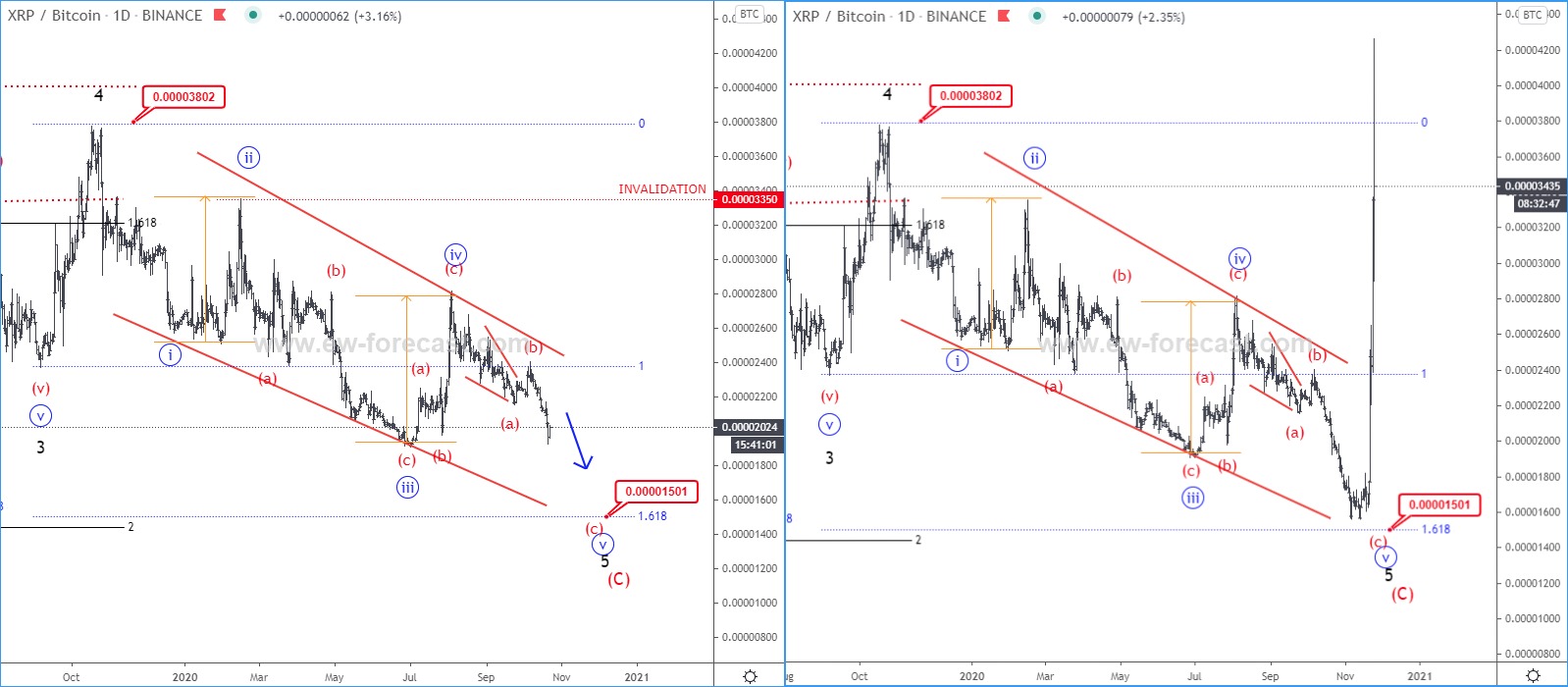XRP/BTC: The Power Of Ending Diagonal Pattern
In this article, we want to show you how powerful can an ending diagonal be, also known as a wedge pattern.
In conventional technical analysis, they call it “wedge”. In Elliott Wave analysis we call it “ending diagonal”. Both terms imply the same thing – reversal ahead, but since we work with the Wave Principle, we will refer to it as an ending diagonal.
The ending diagonal is a special type of wave that occurs in wave 5 of an impulse, or wave C of a correction. This wave often occurs when the preceding move of the trend has gone too far, too fast, and has run out of steam. An ending diagonal pattern is a type of pattern that can occur at the completion of a strong move. It reflects a “calming” of the market sentiment such that price still moves generally in the direction of the larger move, but not strongly enough to produce an impulsive wave. Ending diagonals consist of five waves, labeled 1-2-3-4-5, where each wave subdivides into three legs. Waves 1 and 4 overlaps in price, while wave 3 can not be the shortest amongst waves 1, 3, and 5.
The reason why they are so interesting is that they are indicating a reversal, usually a strong one. That said, after a completed ending diagonal, prices are expected to go back to the level, where the pattern had started.
As you can see, we have followed the wedge pattern on the XRP/BTC pair within wave 5 for the last couple of months. We can see that when it was completely over, a strong rebound occurred back to the starting point and that is why an ending diagonal is a powerful pattern.
XRPBTC, daily (before and after charts)

Disclosure: Please be informed that information we provide is NOT a trading recommendation or investment advice. All of our work is for educational purposes only.



